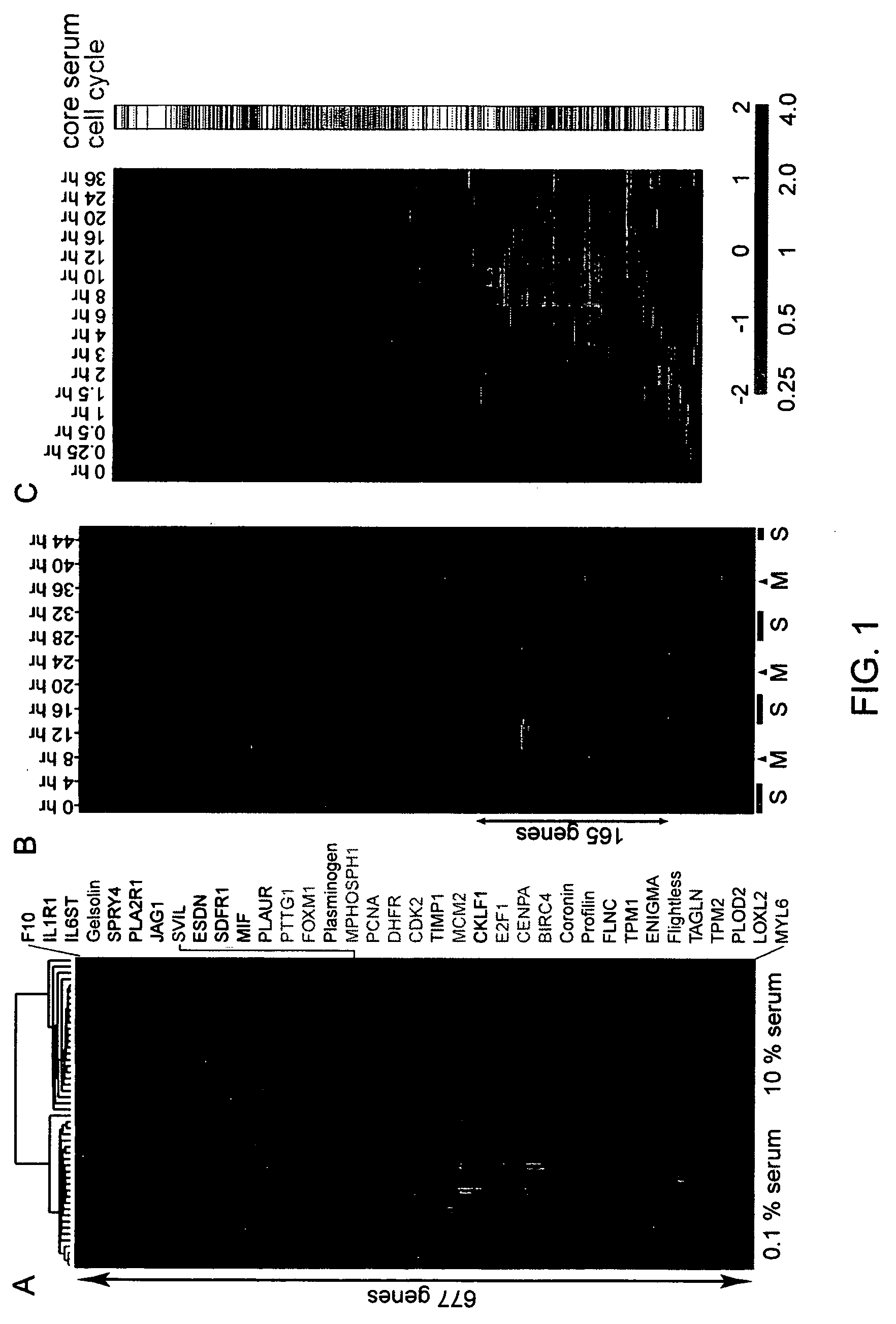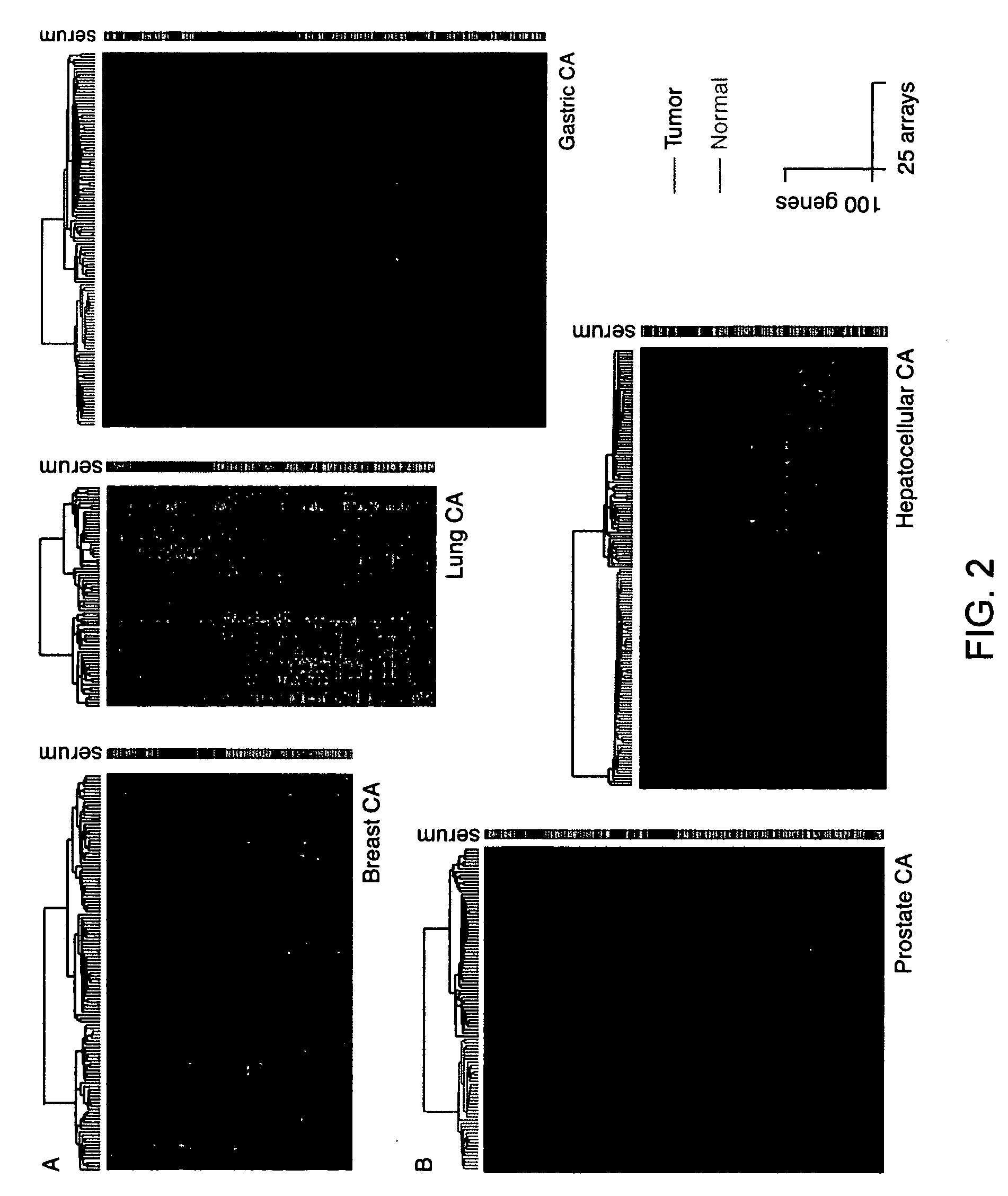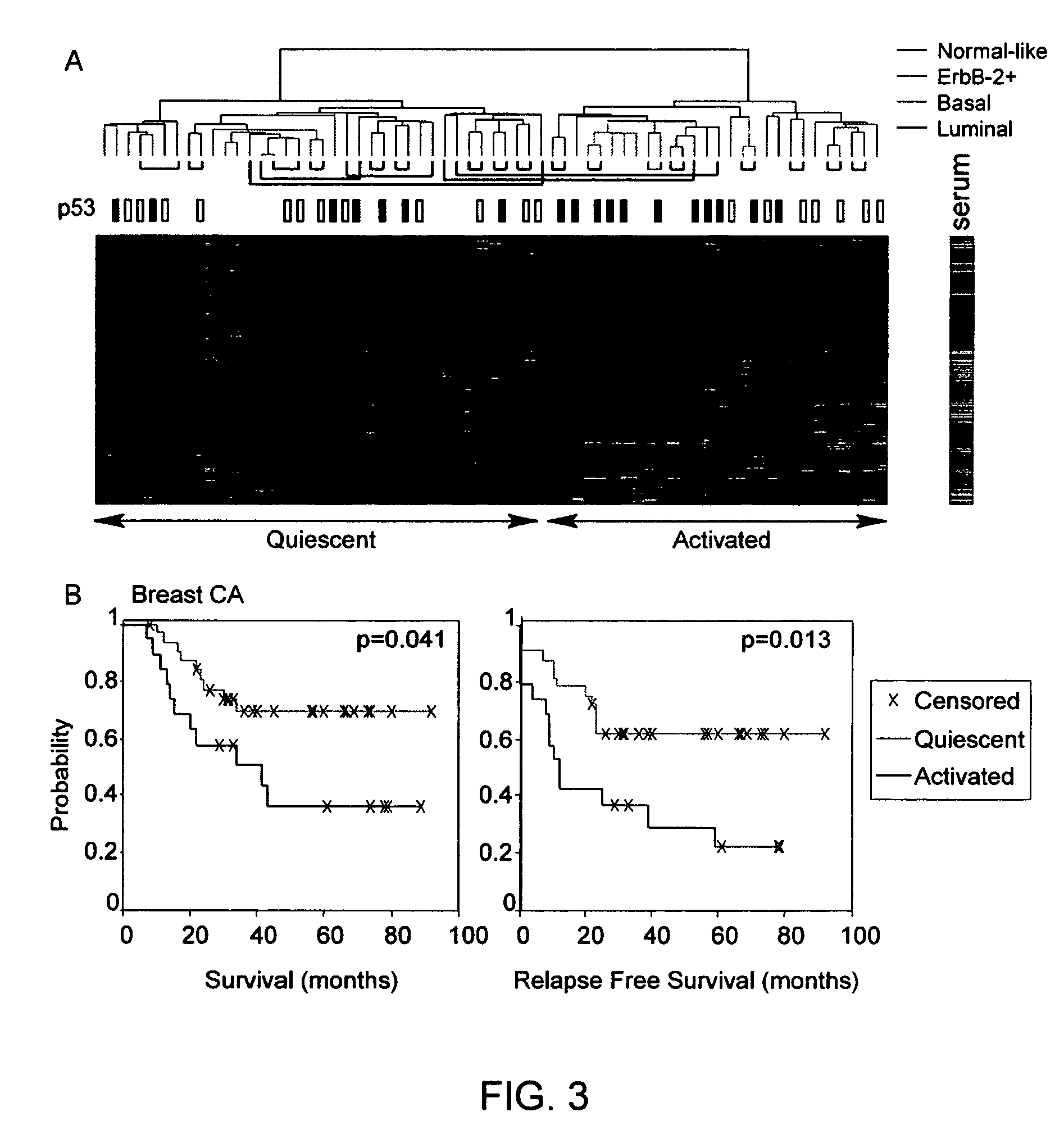Gene expression signature for prediction of human cancer progression
a gene expression and human cancer technology, applied in the field of gene expression signature for predicting human cancer progression, can solve the problems of insufficient comprehensive molecular view of wound healing and its relationship to human cancer, no established method to quantify the risk of cancer from wounds diagnostically or to intervene therapeutically, etc., to improve the probability of metastasis, optimize treatment, and optimize dose
- Summary
- Abstract
- Description
- Claims
- Application Information
AI Technical Summary
Benefits of technology
Problems solved by technology
Method used
Image
Examples
example 1
[0094] Identification of a Stereotyped Genomic Response of Fibroblasts to Serum. We previously observed that the global transcriptional response of fibroblasts to serum integrates many processes involved in wound healing. Because fibroblasts from different anatomic sites are distinct differentiated cells with characteristic gene expression profiles, we investigated whether the genomic responses to serum varied significantly among fibroblasts cultured from different anatomic sites. Fifty fibroblast cultures derived from ten anatomic sites were cultured asynchronously in 10% fetal bovine serum (FBS) or in media containing only 0.1% FBS. Analysis of the global gene expression patterns, using human cDNA microarrays containing approximately 36,000 genes, revealed that although fibroblasts from different sites have distinctly different gene expression programs, they share a stereotyped gene expression program in response to serum (FIG. 1A). Selection for genes that were concordantly induc...
example 2
[0152] Based on the hypothesis that normal wound healing and cancer metastasis may share many common features, we identified consistent features in the transcriptional response of normal fibroblasts to serum, and used this wound response signature to reveal links between wound healing and cancer progression in a variety of common epithelial tumors. Here we show in a consecutive series of 295 early breast cancer patient that tumors showing an activated wound response signature (N=126) had decreased distant metastasis-free probability and overall survival compared to those with a quiescent signature (10 year DMFP=51% vs. 75% and OS=51% vs. 84%, P value=10−6 and 10−10, respectively). We establish a gene expression centroid of the wound signature that allows the signature to be applied to individual samples prospectively and quantitatively, and enables the signature to be scaled to suit different clinical purposes.
[0153] Moreover, we find that the wound response signature improves risk...
PUM
| Property | Measurement | Unit |
|---|---|---|
| Fraction | aaaaa | aaaaa |
| Fraction | aaaaa | aaaaa |
| Fraction | aaaaa | aaaaa |
Abstract
Description
Claims
Application Information
 Login to View More
Login to View More - R&D
- Intellectual Property
- Life Sciences
- Materials
- Tech Scout
- Unparalleled Data Quality
- Higher Quality Content
- 60% Fewer Hallucinations
Browse by: Latest US Patents, China's latest patents, Technical Efficacy Thesaurus, Application Domain, Technology Topic, Popular Technical Reports.
© 2025 PatSnap. All rights reserved.Legal|Privacy policy|Modern Slavery Act Transparency Statement|Sitemap|About US| Contact US: help@patsnap.com



